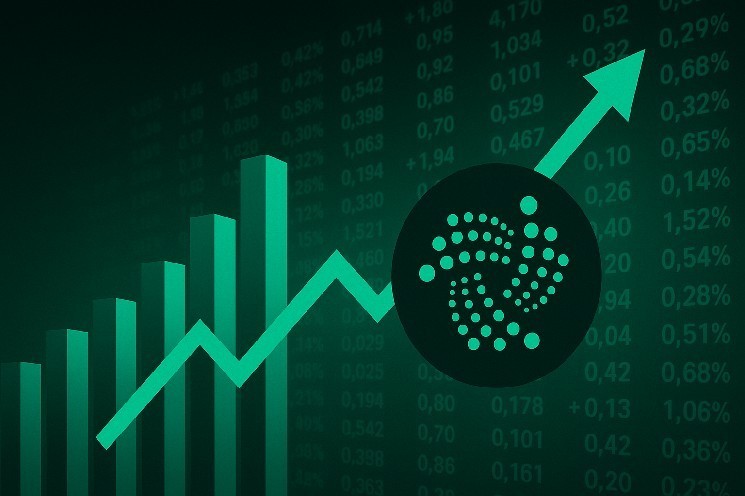- The IOTA Network deepens its foothold in real-world systems, positioning IOTA as a trusted neutral layer for digital identity, provenance, and asset tokenization.
- IOTA recently launched the Trust Framework, published a working DPP demo, and completed its participation in the European Blockchain Sandbox.
The IOTA team started the 10th anniversary month on a high note with the release of its Q3 report last week and Binance joining the network as a validator.
CNF reported that IOTA broke into the regulated finance space when DeFi Technologies, through its subsidiary Valor Inc., launched the IOTA Exchange Traded Product (ETP) on the Swedish Spotlight Stock Market. This means European investors can gain exposure to IOTA directly through traditional brokerage accounts.
Reflecting the wide volatility, IOTA is currently trading around $0.1566, down 18% over the past week. However, there are bright spots as well. Trading activity increased slightly, with daily volume increasing by 6.46% to $34 million. Market capitalization also increased by 8% to $634 million.
Despite the recent market turmoil caused by President Trump's tariff announcements, the IOTA community remains optimistic. Instead, there are ongoing exciting discussions and ecosystem updates.
This week's IOTA
IOTA's work on the European Blockchain Sandbox, an initiative of the European Commission, has concluded its second cohort after three years, with 60 projects selected across the board. The Foundation partnered with IDnow, walt.id, and Bloom Wallet to pilot a tokenized KYC/identity verification solution.
In this sandbox environment, the project faced real regulatory scrutiny and feedback, particularly regarding how to handle identity data, privacy, GDPR compliance, and trade-offs between on-chain and off-chain transactions.
One of the key design patterns that has emerged is the use of soul-bound tokens, non-transferable credentials, to prove KYC status while keeping personal data off-chain. This allows a dApp or service to verify identities without exposing sensitive attributes of the ledger itself.
The sandbox will also draw lessons on how wallet operators, node operators, and identity providers are classified under data protection laws, which will give IOTA a better roadmap for deploying real-world identity infrastructure. Based on these findings, the team introduced the IOTA Trust Framework.
As explained in a previous report, the framework is an open-source suite of modular building blocks aimed at simplifying how organizations integrate blockchain-based trust into their systems. One of these is IOTA ID, which allows you to issue verifiable identities to individuals, organizations, and even devices.
IOTA Notarization ensures data integrity by pinning proofs directly on-chain, and the IOTA hierarchy provides structured access, permissions, and delegation for more secure and efficient operations.
IOTA tokenization brings real-world assets onto the blockchain by representing them as tokens, opening up new possibilities for asset management and exchange. Finally, IOTA gas stations make transactions more user-friendly by allowing gasoline-free transfers and sponsored transfers.
These tools are configurable, allowing architects to select and combine only the parts they need, rather than adopting an all-or-nothing stack.
One of the key showcases built on the Trust Framework is the Digital Product Passport (DPP) demo. This demo links the Trust Framework, IOTA Wallet, and IOTA Explorer to demonstrate how products can transparently and securely maintain their own “history.”
The demo allows manufacturers and supply chains to verifiably, yet privacy-preserve, record lifecycle events, manufacturing, repair, and recycling. Users do not need to manage token mechanics or deal with complex wallet payments. The system handles trust and verification internally.
This will be very useful as the EU prepares for stricter supply chain transparency regulations, making DPP mandatory in sectors such as textiles, and IOTA's demo is already tailored to meet these requirements.

